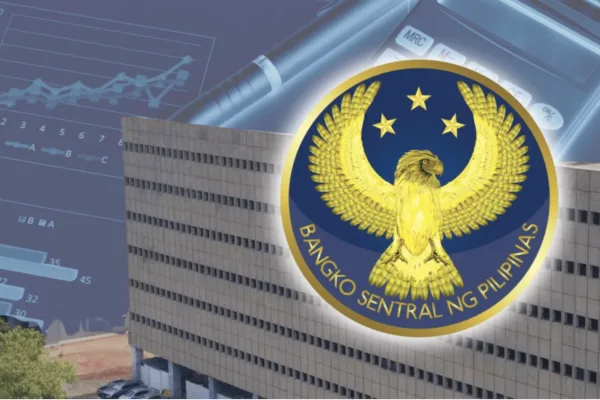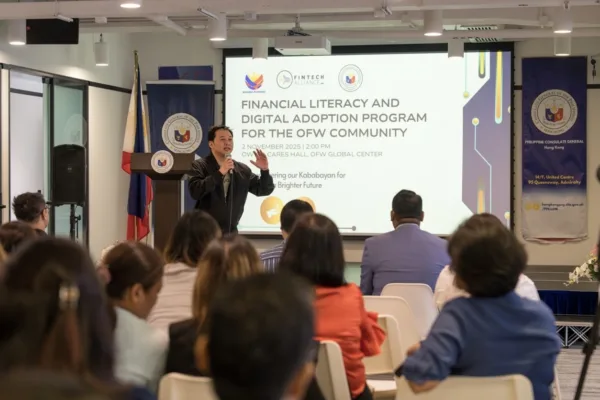Driven significantly by the enduring strength of its overseas workforce while navigating complex currents in foreign direct investment (FDI), the Philippine economy continues to exhibit a fascinating duality.
Latest data from the Bangko Sentral ng Pilipinas (BSP) reveals a sustained upward trend in remittances, cementing their role as a vital lifeline, even as FDI present a mixed picture of growth and contraction.
For the dynamic fintech sector, these trends represent both immense opportunities and evolving challenges in fostering financial inclusion and economic stability.
Remittances remain a robust pillar of growth

Filipinos working abroad continue to be unsung heroes of the national economy. In May 2025, cash remittances channeled through banks saw a healthy 2.9 percent increase year-on-year, reaching US2.66 billion, up from US2.58 billion in May 2024. This consistent inflow underscores the resilience and dedication of overseas Filipinos in supporting their families back home.
A closer look at the data reveals that while land-based overseas Filipinos still account for the lion’s share of remittances at US2.12billion (up 2.8 percent), sea−based overseas Filipinos are demonstrating faster growth, with their contributions rising by 3.1 percent to US536 million. This trend highlights the diversified nature of the Filipino global workforce and the sustained demand for skilled seafarers.
Cumulatively, for the January-May 2025 period, cash remittances swelled by 3.0 percent to US13.77 billion, a significant boost from the US13.37 billion recorded in the same period last year. Personal remittances, which encompass cash sent through banks and informal channels as well as remittances in kind, mirrored this positive trajectory, reaching US2.97 billion in May 2025 (up 3.0 percent year−on−year) and a cumulative US15.34 billion for the first five months of the year.
The United States maintained its position as the top source of remittances during this period, followed by key hubs like Singapore and Saudi Arabia. However, the BSP notes limitations in disaggregating precise country sources, as funds often flow through correspondent banks, predominantly in the U.S.
FDI trends: A mixed bag for economic prospects

In contrast to the steady climb of remittances, Foreign Direct Investments (FDI) presented a more nuanced landscape in April 2025. Preliminary BSP data indicates that net FDI inflows rose by a modest 7.1 percent in April 2025, reaching US610 million from US570 million in April 2024.
This increase was primarily driven by higher net inflows from non-residents’ investments in debt instruments, which surged by 24.3 percent year-on-year to US522 million. Reinvestment of earnings also saw a modest uptick of 3.3 percent to US84 million.
However, a significant deceleration was observed in non-residents’ net investments in equity capital (excluding reinvestment of earnings), which plummeted by 94.1 percent, from US68 million to a mere US4 million. This sharp drop in equity capital inflow raises questions about investor confidence in direct ownership stakes, potentially reflecting cautious sentiment amidst global economic uncertainties.

Japan, the United States, Singapore, South Korea, and Taiwan were the primary sources of equity capital placements in April. These investments largely flowed into critical sectors such as manufacturing, financial and insurance services, and real estate, underscoring the ongoing appeal of these industries to foreign capital.
Despite the positive monthly growth in April, the overall picture for the year-to-date (January-April 2025) is less optimistic, with cumulative FDI net inflows decreasing by 33.4 percent to US2.4 billion, down from US3.6 billion in the same period last year.
This year-on-year contraction warrants close monitoring, as sustained FDI is crucial for long-term economic development, job creation, and technology transfer.
Fintech’s crucial role in bridging gaps

For the Philippines’ burgeoning fintech sector, these economic indicators present a dual opportunity. The consistent growth in remittances highlights the massive market for digital remittance platforms.
Fintech solutions, including mobile apps, digital payment platforms, and blockchain technology, have already proven instrumental in making cross-border money transfers faster, cheaper, and more accessible for millions of OFs and their families. This efficiency not only boosts remittance inflows but also enhances financial inclusion, especially for recipients in remote areas underserved by traditional banks.
Furthermore, the mixed signals in FDI, particularly the cautious approach to equity capital, underscore the persistent challenges faced by Micro, Small, and Medium Enterprises (MSMEs) in accessing traditional financing.
Despite constituting over 99% of all businesses and providing livelihoods for millions, MSMEs continue to grapple with a formidable credit gap. As of end-March 2025, only 4.63% of the nation’s colossal ₱11.8-trillion lending portfolio was directed towards MSMEs, far below the mandated 10%.
This is where fintech can truly shine. By leveraging cutting-edge technology, sophisticated data analytics, and agile business models, fintech platforms are rapidly democratizing access to credit for these historically overlooked enterprises. Innovations in alternative credit scoring, peer-to-peer lending, and crowdfunding are already proving vital, filling the estimated ₱180 billion MSME financing gap.
The steady flow of remittances, combined with the growing need for alternative financing solutions for MSMEs amidst fluctuating FDI, reinforces the critical and expanding role of fintech in fortifying the Philippine economy. As the nation moves forward, the synergy between robust remittance flows and an agile fintech ecosystem will be paramount in ensuring inclusive growth and sustained prosperity for all Filipinos.








